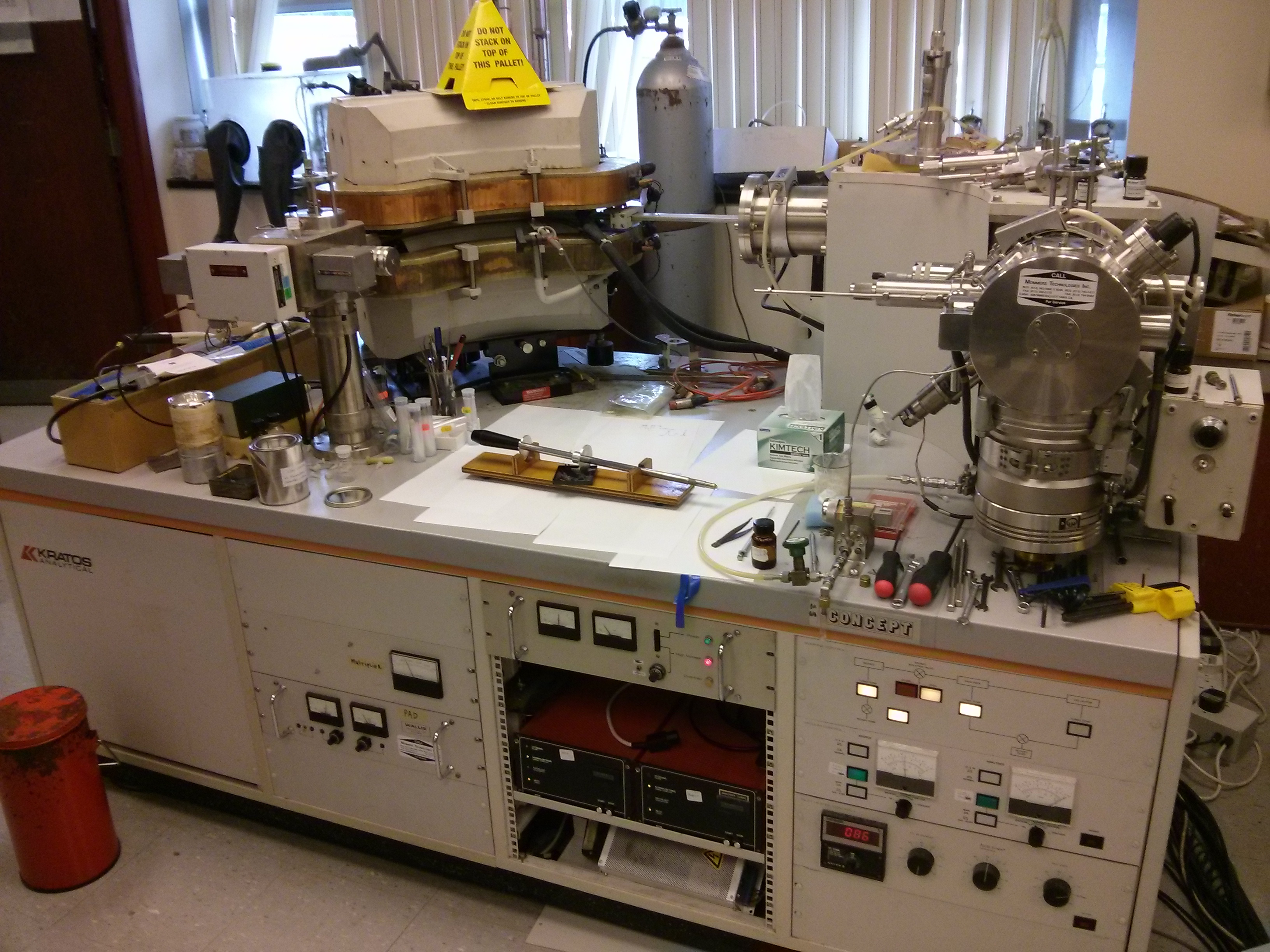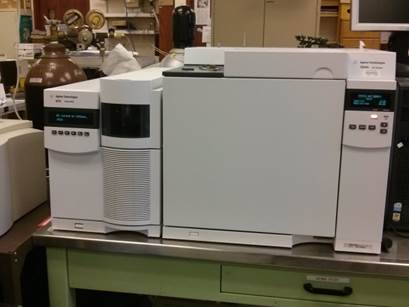Instruments
John L. Holmes Mass Spectrometry Facility houses “state of the art” instrumentation for analysis of chemical and biological samples.
Kratos Concept - Magnetic sector Electron impact mass spectrometer
The Kratos Concept Mass Spectrometer provides accurate mass measurement for pure solid organic compounds that are volatile under 300°C and weigh up to 800 amu. The electron impact ionization technique allows both non-polar and polar compounds to be ionized in the source. The compound and its fragments are filtered by the magnetic sector and detected by an electron multiplier. A total resolution of 10000 is achieved with an internal PFTBA calibrant. Produces classic mass spectra that can be compared to NIST Chemistry Webbook data, perfect for small organic semivolatile compounds and HRes verification compound assignment data.

Waters Synapt G1, HRes and Ion Mobility, Time of Flight Mass Spectrometer.
This instrument has an electrospray source and can be coupled to an HPLC system. High resolution spectra for compound verification. Dual source for calibration, and accurate mass assignments. MS/MS capabilities plus Ion Mobility for separation of isomers and different charge states. Mass 50-5000da range.

Gas Chromatography - Mass spectrometry GC:MS
The Agilent 7820A Gas Chromatography instrument coupled with the 5975 MSD allows identification of volatile and non-volatile compounds (with proper derivatization) according to their retention times and the mass spectral data compared to different databases. Using multiple GC methods, complex mixtures can be separated, characterized and quantified.
The MSD uses an Electron impact filament to ionize the molecules and a single quadrupole and an electron multiplier to detect the compounds that elute from the GC.
We have a number of these instruments offering different columns, non-polar, polar and chiral. We train and supervise students to use these instruments

Methods and applications
Which Mass Spectrometry Method to Use?
Contact Us
Chemical facility
Sharon Curtis
[email protected]
D'Iorio Hall - Room 124
Ottawa, ON K1N 6N5
Tel: 613-562-5800 ext. 604